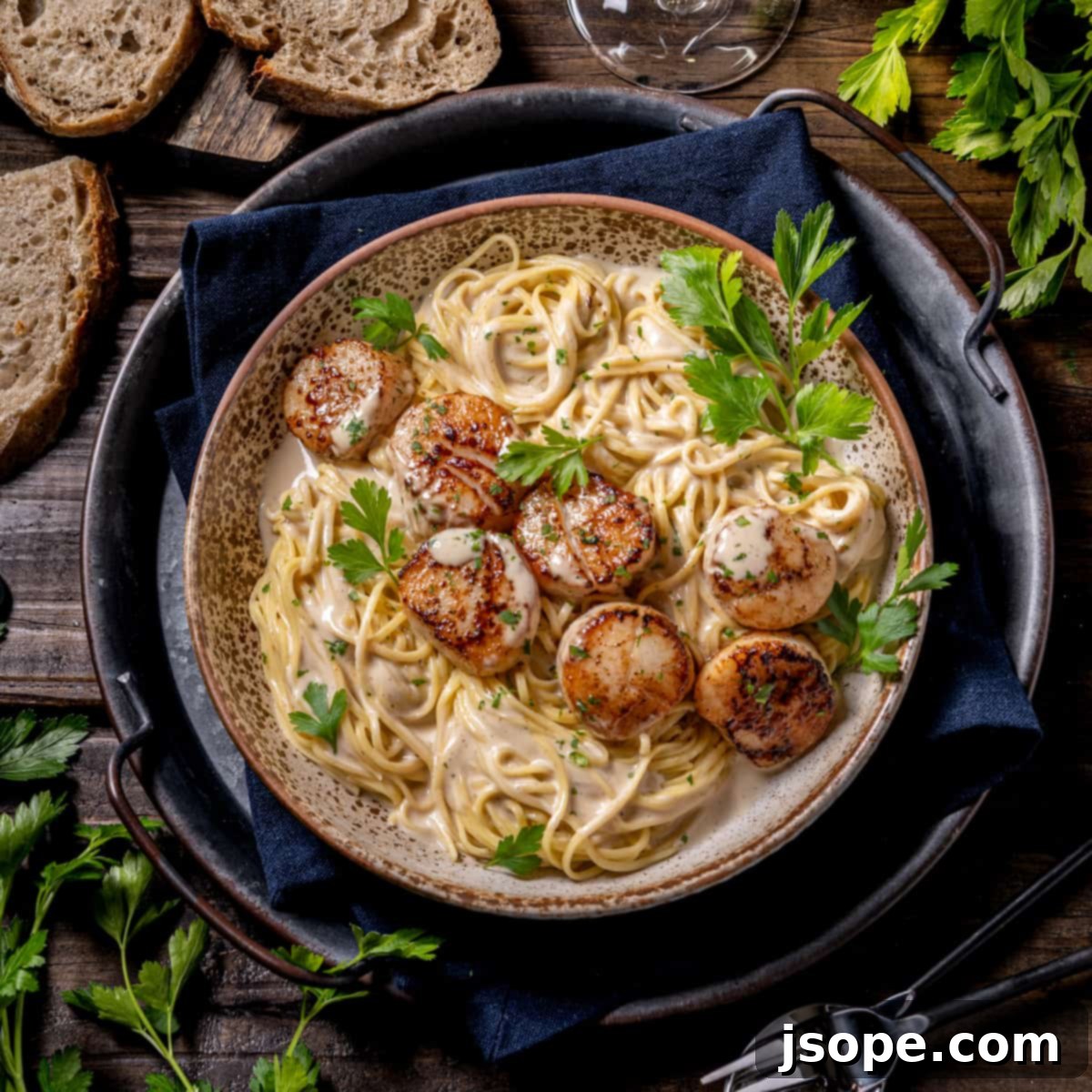Prepare to elevate your home dining experience with a dish that effortlessly combines elegance and comfort: Seared Scallop Pasta with Vanilla Grapefruit Cream Sauce. This exquisite recipe brings the sophistication of a high-end restaurant directly to your kitchen, proving that gourmet flavors can be achieved with ease. Imagine perfectly seared, tender scallops nestled atop a bed of delicate angel hair pasta, all enveloped in a light, aromatic cream sauce infused with the subtle sweetness of vanilla and the vibrant zest of grapefruit. It’s a harmonious blend of flavors and textures that promises to captivate your palate and impress any guest.
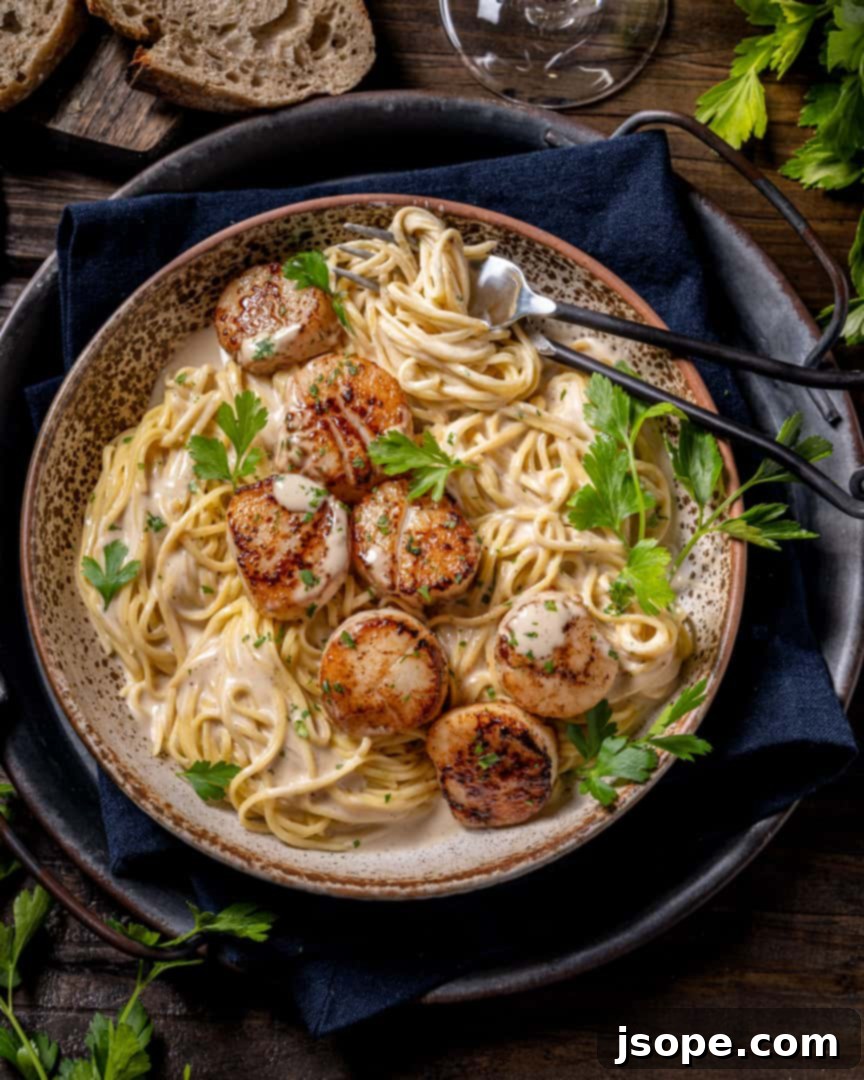
Seared Scallop Pasta with Vanilla Grapefruit Cream Sauce: A Gourmet Meal at Home
Welcome to a culinary journey where the finest ingredients come together to create an unforgettable meal. Our Seared Scallop Pasta with Vanilla Grapefruit Cream Sauce is more than just a recipe; it’s an invitation to savor the delicate balance of fresh seafood, artisanal pasta, and an unexpectedly brilliant sauce. Forget the hassle of dining out; this dish offers a luxurious experience crafted in the comfort of your own home. Whether you’re celebrating a special occasion or simply treating yourself to something extraordinary, this recipe is designed to deliver maximum flavor with accessible techniques.
The Unforgettable Vanilla Grapefruit Cream Sauce
The heart of this dish, and arguably its most distinctive feature, is the incredibly unique Vanilla Grapefruit Cream Sauce. While the combination of vanilla and grapefruit might sound unconventional at first, it creates a flavor profile that is both intriguing and utterly delicious. The sauce is surprisingly straightforward to prepare, allowing you to achieve complex, layered flavors without an overly complicated process. The vanilla bean, rather than dominating, provides a gentle warmth and subtle sweetness that enhances the sauce’s richness, while the grapefruit introduces a bright, zesty counterpoint, preventing the cream from becoming too heavy. This interplay of flavors creates a sophisticated backdrop that perfectly complements the delicate nature of seared scallops.
Vanilla Bean vs. Vanilla Extract: Making the Right Choice
Vanilla beans are renowned for their intense, nuanced flavor and alluring aroma. They impart a depth to the cream sauce that is truly unparalleled. To prepare, simply split the bean lengthwise and scrape out the tiny, fragrant seeds to infuse into your cream. However, we understand that vanilla beans can be a significant investment. If a vanilla bean isn’t readily available or if you prefer a more budget-friendly alternative, you can absolutely achieve a fantastic sauce using pure vanilla extract. We recommend starting with a few drops and tasting as you go, as the potency can vary. It’s crucial, however, to use pure vanilla extract for the best results. Imitation vanilla, with its artificial undertones, will not deliver the same quality or depth of flavor, potentially detracting from the overall elegance of the dish.
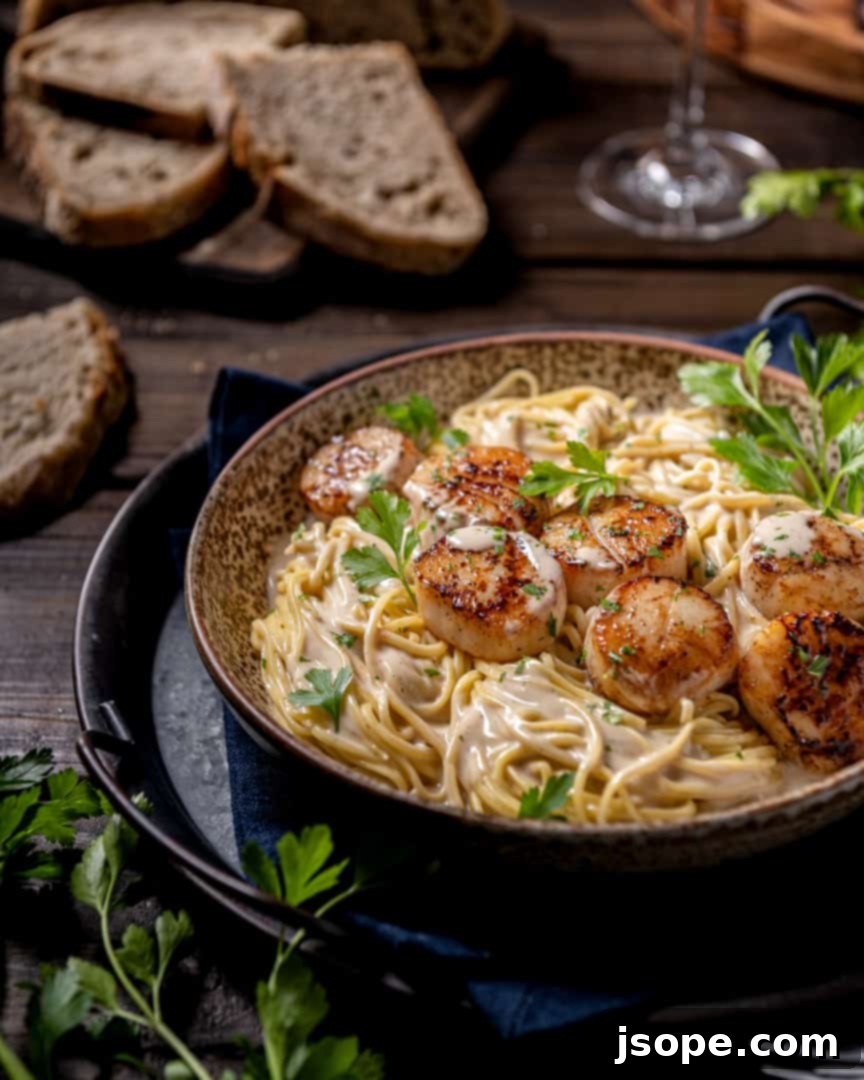
Exploring Citrus: Why Grapefruit is Key for This Scallop Pasta
Our decision to feature grapefruit in this unique cream sauce is deliberate and well-reasoned. Unlike other citrus fruits that can sometimes be overly tart or sweet, grapefruit offers a perfectly balanced acidity and a distinctive subtle sweetness. This inherent quality of grapefruit works synergistically with the natural sweetness of the scallops, enhancing their flavor without making the entire dish overtly “sweet.” It adds a layer of complexity and brightness that sets this sauce apart.
For the most authentic flavor profile of this recipe, we highly recommend using pink grapefruit. Its vibrant hue and slightly sweeter, less bitter notes are ideal. While we encourage culinary experimentation, substituting another citrus fruit, such as lemon or orange, will undoubtedly alter the dish’s overall flavor. Lemon might introduce more tartness, while orange could lean too sweet. Though such a change won’t necessarily “ruin” the meal, it will create a distinctly different experience. If you do choose to experiment, consider the balance of sweet and tart, and adjust other seasonings accordingly to create a similarly delightful citrus cream sauce.
Homemade Pasta vs. Store-Bought: The Foundation of Your Dish
The choice of pasta is fundamental to the success of any pasta dish, and for a gourmet creation like our Seared Scallop Pasta, it truly makes a difference. For those who frequent our kitchen, you’ll know our strong preference for homemade pasta. There’s an undeniable superiority in texture, freshness, and flavor that freshly made pasta brings to a dish. Its delicate chew and ability to absorb sauce are simply unmatched by most store-bought varieties. We highly encourage you to try your hand at making your own with our reliable Multipurpose Pasta Dough recipe, which is perfect for this dish. Shaping it into fine angel hair or thin spaghetti will provide the ideal delicate strands to cradle the rich cream sauce and tender scallops.
However, we understand that time isn’t always on your side. Rest assured, this Seared Scallop Pasta with Vanilla Grapefruit Cream Sauce will still be incredibly delicious with high-quality store-bought dry pasta. If opting for packaged pasta, we recommend selecting thin varieties like angel hair or thin spaghetti. Their delicate strands complement the light cream sauce and plump scallops beautifully, ensuring that each bite is perfectly balanced and not overwhelmed by heavy pasta. Choose a brand known for good texture and flavor to ensure the best possible experience.
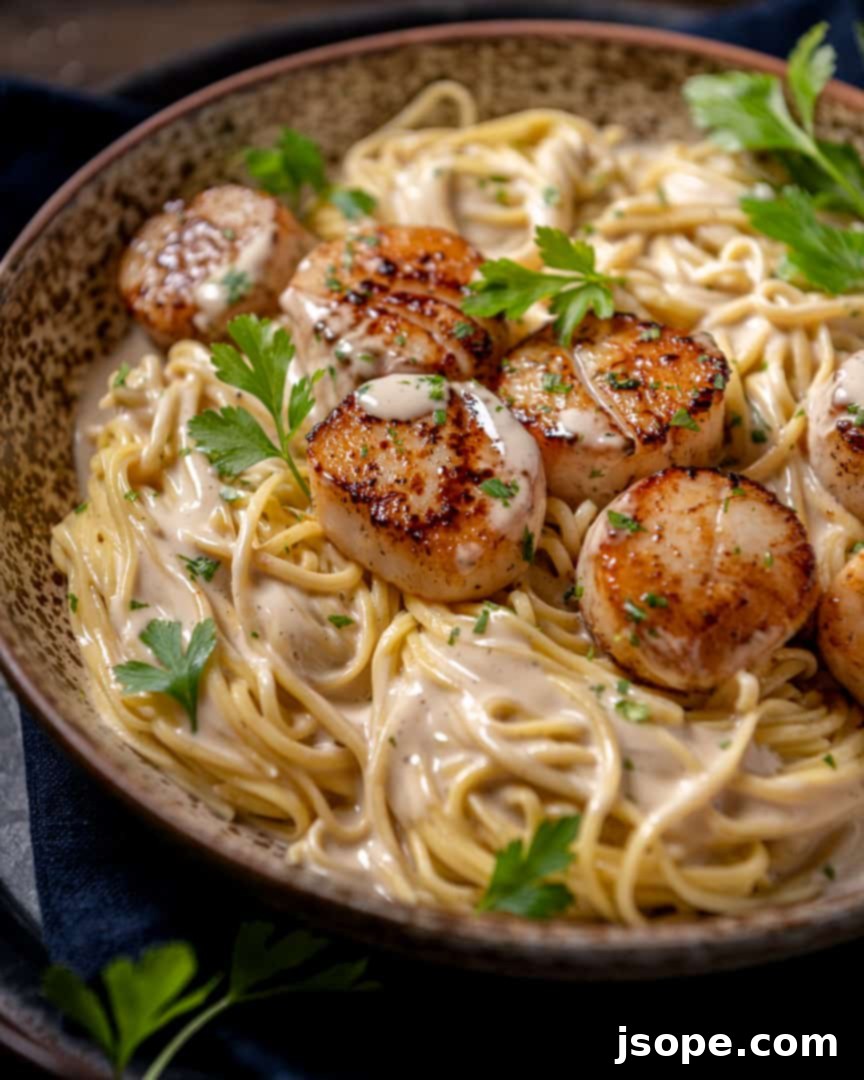
Mastering the Art of Perfectly Seared Scallops
The star protein of this dish, the scallops, demands perfection in searing. A perfectly seared scallop boasts a beautiful golden-brown crust on the outside and a succulent, translucent, and sweet interior. Achieving this balance is crucial for a restaurant-quality experience. The good news is, it’s a technique that’s easier to master than you might think, with just a few key steps.
Selecting the Best Scallops
Your journey to perfect scallops begins at the market. Whenever possible, we advocate for buying fresh scallops from a trusted seafood purveyor. Look for scallops that are firm, plump, and have a sweet, ocean-like smell (not fishy!). If fresh isn’t an option, frozen scallops can work beautifully, but be discerning. Avoid “wet” scallops, which have been treated with phosphates. These additives cause the scallops to absorb water, making them heavier (and thus more expensive) and inhibiting their ability to sear properly, often resulting in a rubbery texture. Instead, seek out “dry” scallops, which are frozen immediately after being caught without any added chemicals. Dry scallops will caramelize beautifully and offer a superior flavor and texture.
The Searing Technique: Keys to Success
Before they even hit the pan, scallops need proper preparation.
- Thoroughly Dry: This is perhaps the most critical step. Moisture is the enemy of a good sear. Pat each scallop meticulously dry with paper towels. Repeat this several times if necessary until they are completely free of surface moisture.
- Remove the Abductor Muscle: On the side of each scallop, you might find a small, tough muscle. This is the abductor muscle. While harmless, it becomes chewy when cooked. Simply pinch it off and discard it. Many times, it may have already been removed during processing, but always check.
- Season Lightly: A simple sprinkle of kosher salt and freshly ground black pepper on both sides is all you need to enhance their natural sweetness.
- Hot Pan, High Heat: Use a heavy-bottomed skillet, preferably cast iron or stainless steel, and heat it over medium-high heat until it’s very hot, just shy of smoking. A hot pan ensures an immediate, even sear.
- Butter or High Smoke Point Oil: Add a small amount of butter or a high smoke point oil (like grapeseed or avocado oil) to the hot pan, just enough to coat the surface.
- Don’t Crowd the Pan: Cook scallops in batches if necessary, ensuring there’s enough space between each one. Overcrowding lowers the pan’s temperature and steams the scallops instead of searing them.
- Timing is Everything: For large, 1-inch thick scallops, sear for about 60-90 seconds per side. The goal is a deep golden-brown crust. Avoid moving them once they’re in the pan until you’re ready to flip. If your scallops are thinner (less than ¾ inch), avoid covering the pan, and adjust the cooking time down slightly.
For an even deeper dive into achieving that perfect crust and tender interior, we recommend exploring our dedicated guide on Perfectly Seared Scallops.
Bringing it All Together: Serving Your Masterpiece
Once your homemade or quality store-bought pasta is perfectly al dente, your unique vanilla grapefruit cream sauce is thickened to perfection, and your scallops are golden and tender, it’s time to assemble this incredible dish. Gently toss the cooked pasta with the warm cream sauce, ensuring every strand is beautifully coated. Then, arrange the impeccably seared scallops on top of the pasta. A final sprinkle of freshly chopped parsley adds a touch of color and fresh herbaceousness, completing the presentation. This dish is best served immediately to appreciate the optimal textures and temperatures of each component.
Wine Pairing Suggestions
To truly elevate your meal, consider pairing this scallop pasta with a complementary wine. A dry white wine, such as a crisp Sauvignon Blanc, a vibrant Pinot Grigio, or even a light, unoaked Chardonnay, would beautifully echo the citrus notes in the sauce and cut through the richness of the cream, enhancing the delicate flavor of the scallops.
Complementary Side Dishes
While this dish is a complete meal in itself, a simple side can round it out perfectly. A fresh, lightly dressed green salad with a vinaigrette dressing would provide a refreshing contrast. Alternatively, some warm, crusty bread is ideal for soaking up every last drop of that amazing cream sauce.
Troubleshooting Common Scallop and Sauce Issues
Why are my scallops rubbery?
Rubbery scallops are usually a sign of one of two things: overcooking or starting with “wet” scallops. Ensure you’re using dry scallops (no phosphates!) and follow the searing times carefully. Scallops cook very quickly, so precise timing is key to maintaining their tender texture.
My cream sauce is too thin/thick. How can I fix it?
If your sauce is too thin, gently simmer it over low heat, stirring occasionally, to allow it to reduce further and thicken. Be patient, as this can take a few minutes. If it’s too thick, you can slowly whisk in a tablespoon or two of warm vegetable or seafood stock (or even a little pasta water) until it reaches your desired consistency.
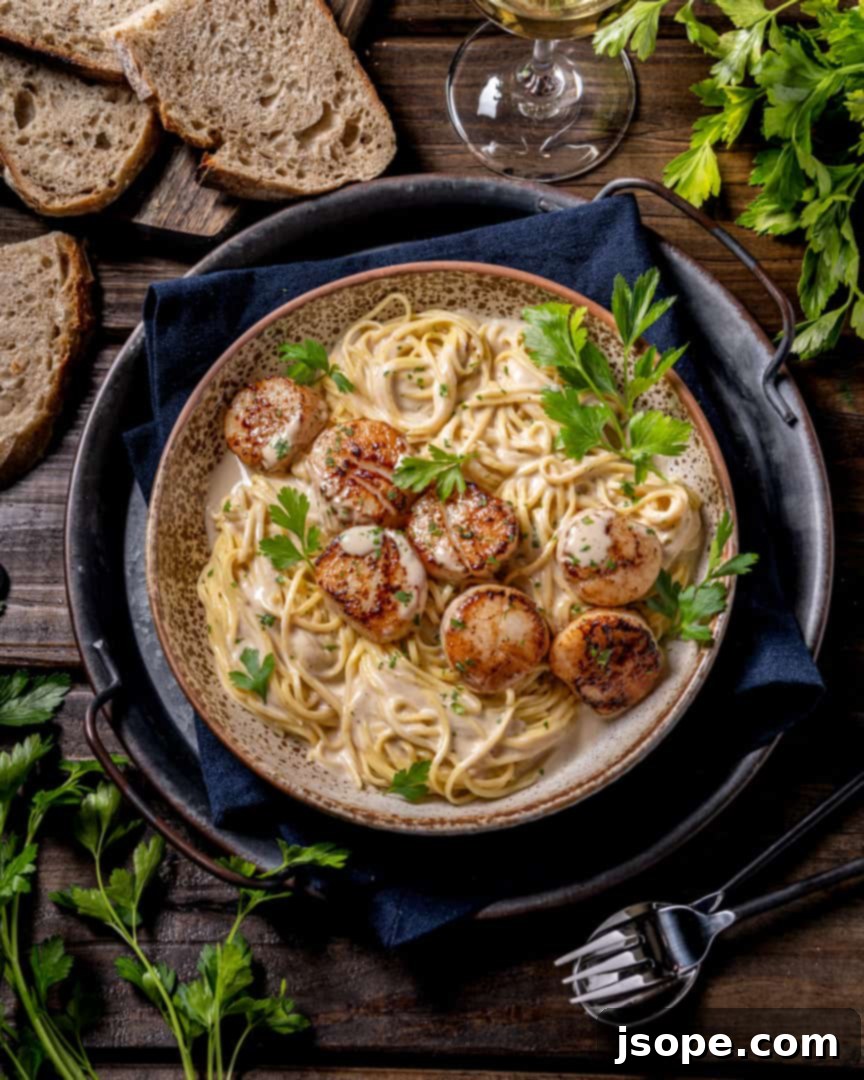
Explore More Delicious Pasta Creations!
If you’ve fallen in love with the gourmet touch of this scallop pasta, we invite you to explore more of our cherished pasta recipes. Our culinary repertoire is filled with diverse and delightful dishes, ensuring there’s always something new to inspire your next meal.
- Roasted Zucchini and Tomato Pasta
- Fettuccine with Winter Spiced Cream Sauce and Rosemary Sage Meatballs
- Lobster Ravioli with Lemon Cream Sauce
- Chicken Piccata with Caper Lemon Butter Sauce
Unlock More Italian Culinary Inspiration!
For those whose hearts beat for authentic Italian flavors, we have an entire collection dedicated to your passion. Discover a wealth of traditional and innovative recipes in our acclaimed cookbook, Mangiamo. Packed with 60 original recipes, it’s your comprehensive guide to bringing the soulful tastes of Italy into your home.
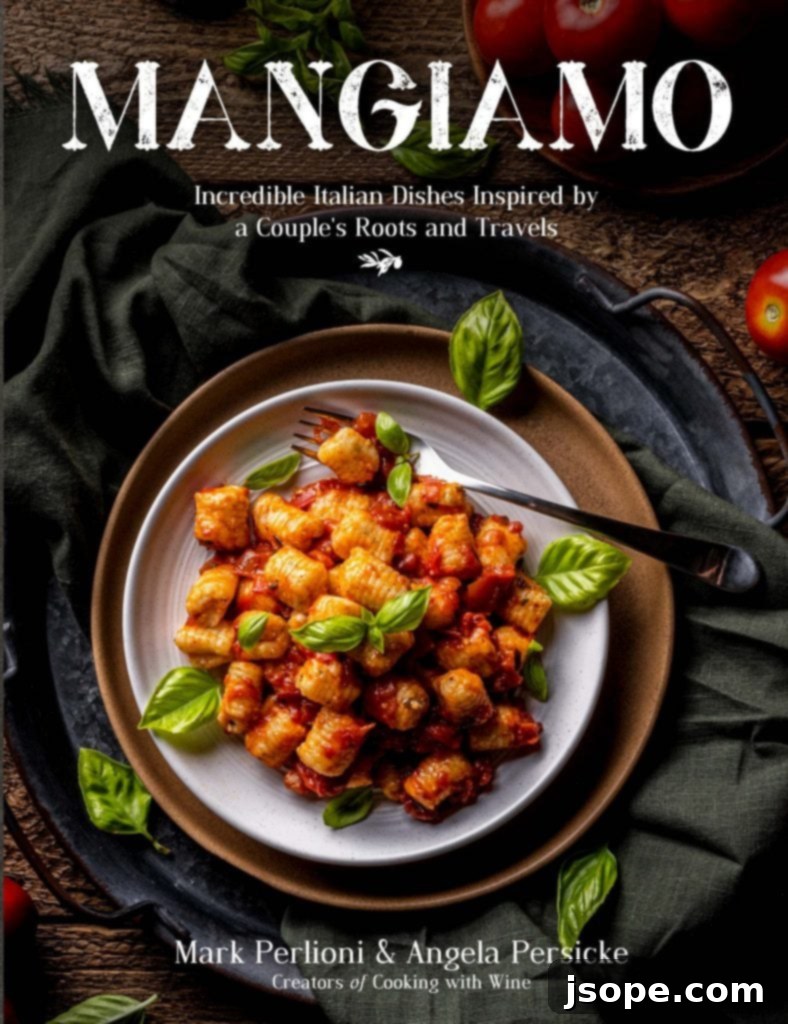
📖 Recipe Card: Seared Scallop Pasta with Vanilla Grapefruit Cream Sauce

Seared Scallop Pasta with Vanilla Grapefruit Cream Sauce
Pin Recipe
Ingredients
For the Sauce
- 2 cups heavy cream
- ½ vanilla bean, split and scraped
- 2 teaspoon olive oil
- 1 Shallot, small, finely diced
- ⅓ cup dry white wine
- 1 ½ cup vegetable or seafood/fish stock
- 1 tablespoon grapefruit zest
- 2 tablespoon grapefruit juice
- 2 teaspoon lemon juice
- pinch of cayenne pepper
- 1 teaspoon white wine vinegar
- 2 teaspoon kosher salt
- ½ teaspoon white pepper
For the Pasta
- 1 recipe Multipurpose Pasta Dough, cut into Angel Hair or Spaghetti (or 8 oz store bought angel hair or spaghetti)
For the Scallops
- 16 Large Scallops
- 1 teaspoon kosher salt
- ½ teaspoon black pepper
- 2 teaspoon butter
- 2 tablespoon finely chopped fresh parsley
For Garnish
- Garnish with finely chopped parsley
Instructions
Prepare the sauce
- Before starting, measure the cream and add the split vanilla bean pod and the pulp to the cream and leave at room temperature (see notes for modifications).
- In a medium saucepan, add the olive oil over medium heat. Once hot, add the shallots and cook until opaque, but before they brown (approximately 3 minutes). Immediately add the wine and reduce until there is under a tablespoon of liquid left (approximately 5-10 minutes).
- Next, add the vegetable (or seafood/fish) stock, grapefruit zest, grapefruit juice, lemon juice, cayenne pepper, vinegar, and salt. Reduce to ⅓ of original volume over medium heat – about 15 minutes.
- Once reduced, add the cream mixture with the vanilla. Bring to a boil and turn the heat down to a simmer on medium-low for about 10 minutes. Strain the mixture to a bowl and return to the saucepan. Reduce until the mixture becomes thickened and a sauce consistency (5-10 minutes) while you prepare your pasta and scallops. Taste for seasoning and add a little salt if needed before serving.
Cook the Pasta
- While the sauce is simmering and before you begin your scallops, bring a large pot of salted water to a boil. Once boiling, and you are about ready to sear your scallops. Add the spaghetti and cook for 2-3 minutes (for fresh homemade pasta) or until tender but is al dente (for store-bought pasta, follow the directions on the packaging to al dente). Once cooked, remove to a colander.
Sear the Scallops
- Once your sauce is at the desired consistency and your pasta water is boiling. Dry your scallops off completely with paper towels and ensure the abductor muscle (the small piece of meat on the side of the scallop) is removed. Sometimes the scallops will not have an abductor muscle on them as it fell off or was removed when processing, but if there is one present, it will be tough when cooked, so peel them off. Sprinkle both sides of each scallop with a very small amount of kosher salt and pepper.
- Heat a large nonstick skillet over medium-high heat (if you must do the scallops in 2 batches that works too). Once the skillet is very hot – not quite smoking – add the small amount of butter (or oil) and quickly make sure it coats the surface where the scallop will be placed. Place your scallops in the pan and cook for 60 seconds undisturbed. Cover for another 30 seconds, then remove the cover, flip the scallops and cook on the other side for 90 seconds uncovered. This is for thick, large scallops (about 1″). If your scallops are not at least ¾ of an inch thick, do not cover at all during the process.
Notes
Nutrition
Support Our Passion: Enjoy More Free Recipes!
We pour our hearts into creating and sharing delicious, high-quality recipes with you, completely free of charge. Our mission at Cooking With Wine is to inspire your culinary adventures and bring joy to your kitchen. If you appreciate the effort and value the content we provide, and wish to support our continuous work, we welcome any contribution you feel comfortable offering.
Every little bit helps us keep the kitchen buzzing and new recipes flowing. However, please know that there is absolutely no obligation to contribute. Your presence in our community and your enjoyment of our recipes are what truly motivate us.
Thank you for being an invaluable part of the Cooking With Wine community. You are the reason we do what we do, and we are incredibly grateful for your support, in any form it takes!
You can support us by buying us a coffee, if you wish!
